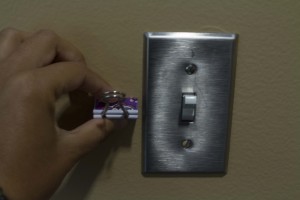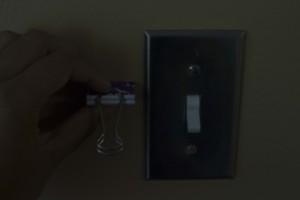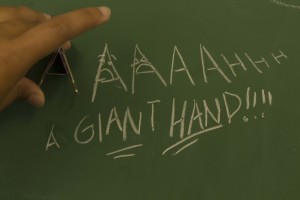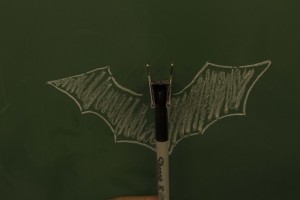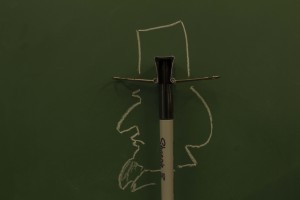You’re wondering mostly if I’m able to ever get anything done in time for deadlines, and if I’m putting the most hours that I can into the project that I’m working on. You’re wondering why my work is so inconsistent.
Uncategorized
VISU 1311: Creativity Blog #4/5/6
I really enjoyed what both Amy Tan shared about her creative process, and what Jim Eno relates about the musical process for the songs from the band ‘Spoon’. They both speak about experimenting with subjects that they aren’t entirely comfortable with, and with that experimentation comes a new sound, or a new twist in the plot of a story that wasn’t there before. They both describe creativity in relatively the same way: as incorporating already existing things in such a way that alters it into a completely new and original idea. In the case of Amy Tan, she explores the different ways in which creativity comes about, and Jim Eno provides us with his specific way of creating.
What struck me about both was how original Amy Tan and Eno viewed their own creations. Of course, they both admit to there being some sort of already existent basis; for Amy Tan, she talks about different settings in her books, and the coincidences that she encounters during her writing process. For Jim Eno, he refers to other bands who have a very distinct sound, that Eno simply used to approach his own work from a different angle. Both used these basises to create their own original work, and even though without these basises their work could have gone a completely different direction, they are able to, at least in some part, take ownership of their work. (While Tan did at one point mention that at the end of her stories the book was no longer her own, that in no way pointed to the idea that it wasn’t an original work. More likely the interpretation of the saying was that the story took on a life of its own through the coincidences that she encountered during her writing.)
The two articles also help me to reflect on how I myself create. Sometimes my creations are part of an experimentation that I decided to go with, but more often than not I find myself drawing much the same thing. Hopefully these talks will help me to expand my drawings a little bit more. I also have to keep in mind, like Jim Eno said, that I can come at my work through different angles that were already presented by someone else, in order to make it completely new both for my work and for theirs. Nothing is completely original; it is all just one alteration after another.
100 Solutions for an everyday object
There are many different ways of looking at a simple paperclip. However, the following are my favorite.
This picture was my favorite out of all of the situational pictures that I took. My dog is balancing the paperclip on her nose, because she suspects its a treat, and there’s a general sense of waiting for something to happen.
These two pictures have to go hand-in-hand with each other, because without the context of both, neither makes sense. I like the interrelationship between these two photos, and the connection that can be made between the flipping of the switch, and the position of the paperclip prongs. It sort of represents the way that one small movement can make a big difference.
The reflection in this photo was what really caught my attention when I looked through my collection. It’s not an exact replica, but that’s what makes it interesting. Not being symmetrical, the paperclip couldn’t make any common shapes with its reflection, but that’s also what keeps this photo interesting.
This is not the only chalk picture that I took that involved seeing the paperclip as an ‘A’, but it’s the one that I like the most, because it has an interaction between the drawing, the paperclip, and the hand, and at the same time is just large exclamation. It also has some fantastical element to it, since letters don’t typically see the hands that write them, and hey, at least I think it’s funny.
I feel as if the rest of these photos can be explained together. These are the pictures that I felt portrayed the different shapes of the paperclip the best. All of the depictions above would be incomplete without the paperclip, and the paperclip would remain a mere paperclip without the drawings to draw out the imagination. Also, even though all of the pictures are still, there is some action in the blowing of the horn and the spaceship taking off that can be felt because of the paperclip. And who doesn’t like a Batman reference?
VISU 1100: Blog Post #1
1. The main point in the Fortune article is that entrepreneurs should learn to become artists, because artists possess all of the talents that are essential to the innovation that makes up today’s market. On the other hand, the main point of the Huffington Post article is the idea that artists should learn to work together with other people so that they all can achieve this one goal that they all share.
2. Artists can learn from entrepreneurs the humility to create a network of people who will support them in their endeavors, and to successfully use the resources at their disposal to achieve their end goal.
3. I definitely agree that in many ways, artists are like entrepreneurs, but for one characteristic: the entrepreneurs build innovation for the business, while the artist builds innovation for themselves. In some cases, the artist may be building on their creativity in order to share it with larger group of people, but for the most part their creativity seeks to outdo the artist’s own creativity from yesterday.
4. I wholly believe that artists are humanists. Since they are able to empathize with other people, they are able to create work that reaches out to everyone else, in a way that few things can.
5. Artists can also be thought of as lenses. In order to be creative, the artist must take that which is familiar to us, and redefine it. They must look at ordinary life, and transform it from a new perspective, like a lens over the things that we can already see. Sometimes everything will look red, or only certain objects will look squiggly, or the shadows will begin to contrast more heavily. Or maybe the entire field of vision will be taken over by something completely alien. It’s entirely up to the artist, as they are the ones creating this new lens.
6. I think that both entrepreneurs and artists should be open to the response they receive from their various audiences. If they are able to take their creativity and turn it into a conversation with other people, I believe that they’d achieve new heights in their thinking and production.
On the subject of grit…
1. Grit definitely seems to be something that I need to work on. I have some, but I need to cultivate it.
2. Some ways I can increase my grit it maybe by convincing myself to go back to an old project and looking at it from a new angle, or by taking a short break every once in a while – not one that makes me forget about the project, but one that helps me to retain my interest for a longer period of time.
VISU 1311: Creativity Blog #3
Before I dive into Kenya Hara’s “What is Design?”, I feel the need to answer that question from my own perspective before recapping on theirs. Design, to me, is a way of putting images together to communicate a certain idea; it can contain many purposes, among them propaganda, persuasion, information, or simply the sharing of an emotion.This is not the passive capturing of a gorgeous landscape that is the exigence of photographers today, but the active planning and creation of images and text in order to shape them to the artist’s intention.
Hara, in some way, agrees with this hasty explanation. The design that is discussed in their book involves the reawakening of everyone’s mundane life and forcing everyone, not just the artist, to look at it from a fresh perspective. Remaining open to the variety of life around the world is key to making this type of design work for the artist.
To better understand design, Hara references the very beginnings of design, back from when the caveman first picked up sticks and used his hands to shape his environment, to the introduction of “industrial mechanism” (Hara 417) in manufactured goods evoking backlash from some of Europe’s finest artisans. The workers who put so much effort into protesting the mass production of goods in turn produced a huge amount of objects that could only be shaped with human hands, and in doing so produced the foundations for concept of modern design that society is familiar with today.
The one other movement that Hara believes also contributed to modern design is the Bauhaus movement, in 1930s Germany. This movement actually embraced the new industrialization of the economy, seeing chances in it that could help improve many of their ideas. Design, in this movement, was pulled along with industrialization to a point where design simply became a part of the economy, in order to fuel the huge wave of consumption. In some ways, it seems as if Hara believes that the concept of design cannot be separated from the concept of the world economy. The two have become too entangled together as the world became more connected, particularly in countries such as the United States and Japan, where marketing is a huge part of the economy.
Today, Hara intertwines the ideas of modern design with the incredible boom in information technology. Hara also introduces the idea that society is looking at design in a way that is actually harmful to its development: as a constant evolution that is perpetually shaming the designs of yesterday. Instead, Hara encourages the readers to view design, and the materials of the modern age, as something that can be conceived from the normalcy of our everyday lives, not as a concept that can only come from entirely new material. “The old accepts the new” (Hara 435), in other words, and can then form a myriad of new ideas from that combination, and so on and so on.
In light of this exploration into the history of design, I see that my perception of design at the beginning failed to include much of the depth that context can bring to design’s origins. Since I myself plan to become a designer, I should attempt to look at the everyday events in my life from a completely new perspective. Only then, I think, can I begin to view design the way that Hara sees it: through the eyes of history, and with the possibilities of the future at hand.
VISU 1311: Creativity Blog #2
In “High Concept, High Touch”, Pink examines the growth of third world societies from a farmer society from the current transition into a thinking and empathetic society, and features even more closely the value that today’s citizens have in this new age. Without the ability to provide novel ideas in an already knowledgeable society, people are not able to compete with the rest of society in “mere survival” (Pink 51).
The basis for his argument with socieety becoming more right brained happens to coincide with his three arguments for present-day evidence, and one in particular stood out to me: GM motor’s as a business in art. Evidence of this new approach from GM has been seen not only in this one car company, but in all car advertisements that can commonly be seen in normal everyday life. This singlee example by itself proves just how visually oriented the world is becoming today. Corporate businesses have begun to incorporate more disciplines into their work–primarily art, because it grabs their customers’ attention. Again, workers who aren’t able to produce products that are physically and emotionally appealling are left out in the rain, because they were taught knowledge, not empathy. The knowledge is now available to everyone, so what use is it to any one person unless they can create something entirely new out of it?
On the other side of the coin, those who are able to create must be able to continually do so. And this new “artsy” side of America cannot be explained in the traditional sense, which is what readers would tend to belive at first. Art, for many people of the right-brained persuasion, goes hand-in-hand with the idea of new creation. Those who understand this new creation can make it; those who make it must continue to make it.
So that brings us to how to teach our children this new kind of culture. A test-happy America is sadly outdated in its teaching techniques, which gear children’s minds in a direction more applicable to the past society of knowledge. Teaching creativity is now more vital in order to promise the next generation of children a happy future, but the system simply is not having it. Too much trial and error is required in order to create this new system, and the age of creativity is just around the corner. Unfortunately, this means that many people will simply be left behind, unless they learn to adapt to these new global conditions.
There are several examples of some trial in creative teaching. For example, Professor Robert Sternburg of New Haven, Pennsylvania is developing an augmentation for the current SAT, called the Rainbow Project. It measures the reactions to humor and real-life situations, which are better able to determine how well a student will do in college, when compared to SAT results. It may also open up new roads to people who’s creativity and empathy were not measured in the SAT, and who have had many roads to success closed to them. This new test could potentially decrease both the wealth and racial gaps that many people feel today.
Overall however, the real question with the coming of this new Conceptual Age is: what exactly are we supposed to do to prepare ourselves for this society of empaths and creators? Pink focuses on the answer to that question in the rest of his book; being unable to read this book currently, I am forced to create my own answer. Creating alternatives for our current schooling system seems the most immediate answer. It does not solve every problem however, and perhaps the creation of a new system that is completely untested would result in more problems. Other solutions may include granting further liberal education for those who were not able before, due to various circumstances. Whatever the future solutions may be, the result is that our future society will be much more focused on right-brain thinking, a movement that may change the way that the word itself thinks.
VISU 1311: Creativity Blog #1
The really surprising thing that Flusser tries to convey in “the photograph”, at least for me, was the abstractedness of photographs; this contradicts all of the criticism and wonder that I’ve had for photography since childhood, and throws it out the window. he describes photographs as abstract concepts, based on the concepts that we as people have learned all our lives. In order for him to truly see a photograph, he must “decode” the abstractedness that takes away from, as he says, the true purpose of the photograph.
However, decoding of the photograph doesn’t seem to be that easy. One must first identify the photographer’s intention for taking the photograph, and keep in the mind the camera’s actual program; viewing them as separate wills is key to understanding Flusser’s concept of decoding. He views the abstractedness in all photographs as the clashing of interests between these two entities, and seems to view most photographers as being taken in by the camera’s program. The people who are able to dominate the camera’s program and submit it to their intention for the photograph are the people who Flusser truly seems to appreciate, at least, “on the basis of this criteria” (Flusser 47).
The entirety of the photograph, in terms of decoding, is then made more complex. Flusser argues that every photograph is a result “of co-operation and of conflict between the camera and the photographer” (Flusser 46). By introducing further levels of interpretation of the photograph, he furthers the amount of decoding that must be done before the critic can begin to truly see the ‘black and white’ concept(s) that the photographer was initially attempting to convey.
The truly confusing part of this entire concept is the idea that the camera’s program acts as a separate entity, in order for the critic to ‘theoretically’ find the original ideas behind the photograph’s conception. Camera’s programs simply do not act on their own. However, Flusser’s belief in that camera programs aim to absorb the photographer’s intentions into themselves, and that as more time goes by, the programs are succeeding at redirecting photographer’s intentions more and more. This seems unlikely to be the case, at least in my opinion. I do believe that he makes more of a point in the conflict and convergence of interests between the camera and the photographer, and that the photograph is the result of collaboration between the two.
Perhaps what Flusser means by the camera having a separate identity, is the idea that a camera has so many technological functions in this day and age, and acts almost as an advertisement for its own functions when people post photographs in media, in the hopes of “[encoding] their concepts of the world into images” (Flusser 45). As other people become aware of the functions of the camera’s program, the more people begin to use these programs with the intention of creating their own model. They instead, however, merely redirect their original intentions to the benefit of the camera program.
Understanding the relationship between the camera and the photographer is key to understanding Flusser’s concept of photographs, and also his ideas of abstractedness. The difficulty primarily seems to be in separating the two concepts for the sake of theory, since they are not actually seen as different. I have found that it is easier to understand the motives behind each entity, and continuing to observe how the two affect one another in the finished photograph.
Hello world!
Welcome to your brand new blog at St. Edwards University Sites.
To get started, simply log in, edit or delete this post and check out all the other options available to you.
For assistance, visit our comprehensive support site, check out our Edublogs User Guide guide or stop by The Edublogs Forums to chat with other edubloggers.
You can also subscribe to our brilliant free publication, The Edublogger, which is jammed with helpful tips, ideas and more.


